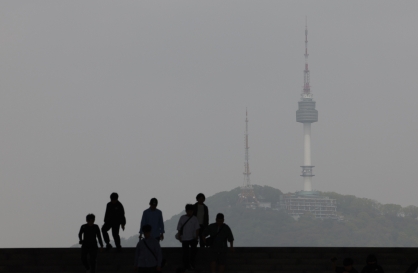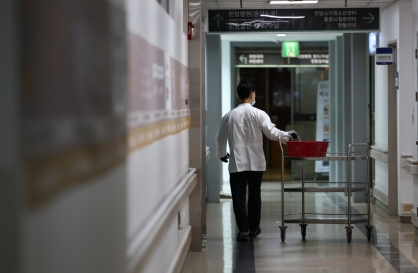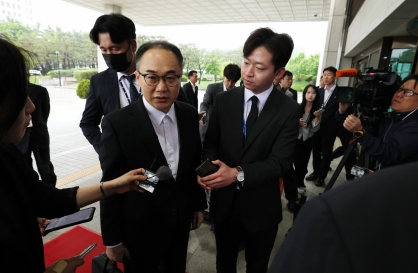 The Fed failed to raise interest rates on Sept. 21, giving many markets and fund managers a sigh of relief. Fed Chair Janet Yellen said that the case for an increase has strengthened, but decided for the time being to wait for further evidence of continued progress toward the Fed objectives of maximum employment and price stability. Some analysts felt that any Fed rate increases would be seen as favoring one party in the US presidential elections.
The Fed failed to raise interest rates on Sept. 21, giving many markets and fund managers a sigh of relief. Fed Chair Janet Yellen said that the case for an increase has strengthened, but decided for the time being to wait for further evidence of continued progress toward the Fed objectives of maximum employment and price stability. Some analysts felt that any Fed rate increases would be seen as favoring one party in the US presidential elections.Caution having over-ridden valor, overall stock markets rallied somewhat, while currency markets moved sideways. Going forward, the futures market thinks that there is a 60 percent chance of the Fed raising interest rates in December, after the November presidential elections.
The key question is whether the dollar will strengthen. So far, the US has been strong against emerging market currencies, flat against the euro and weakened relative to the yen.
There are hoards of analysts trying to forecast short-term and long-term exchange rate movements. Exchange rates are determined by the supply and demand in currency pairs, usually between the dollar and the most traded currencies, such as euro, pound, yen and other liquid currencies (Australian dollar etc). In turn, the supply and demand for foreign exchange would depend on the current account (trade flows) and capital account (financial flows) of the balance of payments.
If one only looked at trade flows, then exchange rate expectations would depend on whether countries are running large current account surpluses or not, on the basis that a surplus country’s currency would strength. On that basis, one would expect that the Euro should strengthen, because the eurozone is now overall running a current surplus of roughly 3 percent of GDP. Germany alone is running a current account surplus equivalent to 8 percent of German GDP. However, investor nervousness about the sluggish outlook for the eurozone has keep the euro on the weak side.
One reason is that capital flows are now driving the exchange rate, due to large portfolio flows in search of yield and total returns, as financial assets become more globalized. Theoretically, portfolio flows should be driven by covered interest rate parity, meaning that foreign exchange traders arbitrage in spot, forward and futures markets to equalize risk-adjusted interest rates between countries. Hence, expectations of interest rate differentials between countries matter in shaping exchange rate behavior.
Interest rate behavior is determined today largely by monetary policy, which is why global markets are particularly nervous about US Fed interest rate adjustments. Since the US dollar is the world’s benchmark currency, with roughly two-thirds of global financial assets measured against the dollar, global financial markets move in expectations of future Fed interest rate increases.
The US remains the dominant military and economic power and is consequently the safe-haven currency. Whenever geo-politics become tense, as is the situation currently, the flight is always towards the dollar. Furthermore, all signs point towards the US economy performing best amongst the advanced economies, despite overall slower growth post-crisis.
There is enough evidence that the US is already reaching full employment levels at 4.9 percent unemployment rate, with anecdotal evidence that companies are hiring in anticipation of growing consumer confidence.
There is however a disconnect between the US recovery and trade growth. The US consumption pattern has changed from consuming durables toward spending on services, such as new apps and digital entertainment. A partial shift toward manufacturing at home also explains why exports to the US have not increased substantially. With global trade growing slower than GDP, emerging markets are not growing due to the traditional cyclical uptick in exports.
The bad news is that historically, a strong dollar has been associated with slower global growth and vice versa. The explanation is that when the dollar is weak, capital flows out to the emerging markets, stimulating trade and investments. When the dollar is strong, capital flows back to the US and if the US is unable to recycle these flows, global growth weakens.
As the taper tantrum in 2013 showed, when the Fed signaled an increase in interest rates, emerging markets suffered huge turmoil of capital outflows, leading to either interest rate increases or sharp devaluations.
The power of the US to recycle global capital flows is critical to global recovery. Unconventional monetary policy in the US, in the form of near zero interest rates, is not working because the transmission mechanism of cheap money to the real economy is not working. Liquidity remains within the central bank-financial market nexus, with relatively slow lending to finance private sector long-term investments.
The private sector is also not confident about the future until there are stronger signs of sustained consumer spending. Furthermore, much-needed public sector investments in infrastructure are being constrained by the large debt overhang and toxic politics.
In short, global capital flight to the dollar, with near-zero interest rates, will mean global secular deflation. The reason is that zero interest rate dollar holdings have the same deflationary role as gold in the 1930s. Holding gold was deflationary because spending stops as more and more gold hoarding drained liquidity from the market.
Wait a minute. If the Chinese economy is still growing three times faster than the US in GDP terms (6.7 percent versus 1.8 percent), shouldn’t the RMB appreciate? Yes, China is running a current account surplus, but capital outflows are currently running about the same level as trade surpluses, so foreign exchange reserves are flat. Many people think that capital outflows indicate that the RMB will remain weak against the dollar until private sector confidence recovers.
The European and Japanese central banks are running negative interest rate policies precisely because with interest rates relatively lower than the dollar, capital flows will induce lower exchange rates, which will hopefully reflate their economies. The Fed has exactly the same fear as the People’s Bank in 2009 when China was growing at more than 10 percent per year. Higher Fed interest rates would attract higher capital inflows, pushing up the dollar and inducing even higher asset bubbles, with no inflation in sight.
In sum, much will depend whether the US will use more fiscal stimulative policies and less of unconventional monetary policy to revive productivity growth. It looks as if we will have to wait for a new president to make that strategic call. We will know by November,
By Andrew Sheng
Andrew Sheng is a distinguished fellow at the Asia Global Institute in the University of Hong Kong. — Ed.
(Asia News Network)



![[AtoZ Korean Mind] Does your job define who you are? Should it?](http://res.heraldm.com/phpwas/restmb_idxmake.php?idx=644&simg=/content/image/2024/05/06/20240506050099_0.jpg&u=)














